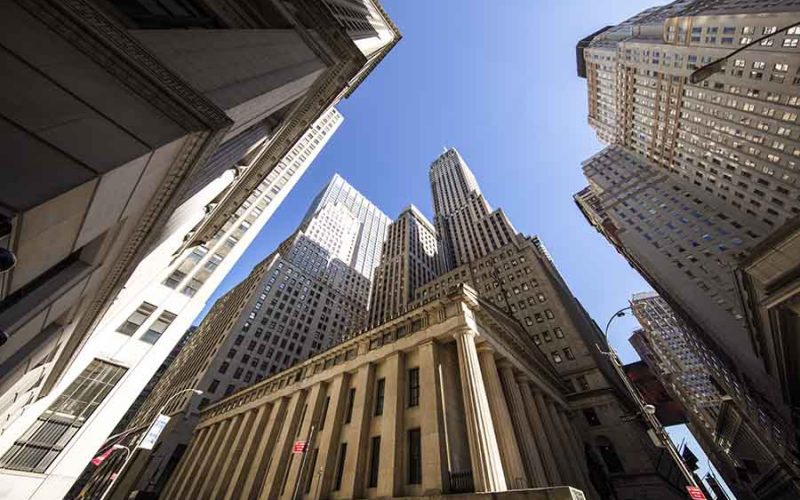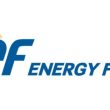by Collin Martin, Director, Fixed Income Strategist Chartered Financial Analyst (CFA®) Schwab Center for Financial Research
1. Yields are still near their 12-year highs. Corporate bond yields have risen along with U.S. Treasury yields, and then some. Corporate bond yields are composed of U.S. Treasury yields plus a spread meant to compensate investors for the additional risks that corporate bonds offer, like the risk of default.
Investment-grade corporate bond spreads have risen along with Treasury yields, pulling the average corporate bond yield even higher. With this year’s rise, corporate bond yields are near their post-financial crisis highs.
Corporate bond yields are near their 12-year high

Source: Bloomberg, using weekly data as of 8/23/2022.
Bloomberg U.S. Corporate Bond Index (LUACTRUU Index). Yield-to-worst is the lowest potential rate of return for a bond. The lower of yield-to-call or yield-to-maturity. Past performance is no guarantee of future results.
Put differently, corporate bond investors are rewarded with higher yields when investing in intermediate- and long-term bonds. With U.S. Treasuries, yields decline from two years through 10 years, as the chart below illustrates.
The investment-grade corporate bond curve is positively sloped

Source: Bloomberg, as 8/23/2022.
USD US Corporate IG BVAL Yield Curve (BVSC0076) and US Treasury Actives Curve. Past performance is no guarantee of future results.
We’ve been suggesting investors modestly extend the average duration of their bond holdings for a few months now. For Treasuries, that guidance might be difficult to swallow since that means locking in lower yields than what’s available in one- and two-year Treasuries, for example. But that’s not the case with investment-grade corporates, as the chart below illustrates. Keep in mind that corporate bonds do come with more risks, of course.
Investors who have been waiting for yields to rise should consider moving a little further out on the corporate bond yield curve to lock in those high yields now.
Intermediate- and long-term corporate bond yields are higher than short-term corporate bond yields

Source: Bloomberg, as of 8/23/2022.
Columns represent the maturity-specified sub-indexes of the Bloomberg U.S. Corporate Bond Index (LUACTRUU Index) and the Bloomberg U.S. Treasury Index (LUATTRUU Index). Past performance is no guarantee of future results.
Credit risk is the risk that an issuer may default on a bond or that a bond could be downgraded, resulting in a drop in its price. Corporate bonds have varying degrees of credit risk—investment-grade corporate bonds should have less credit risk than sub-investment-grade corporate bonds, for example. Even within the investment-grade spectrum the risk can vary, but according to Moody’s Investors Service, a bond with an “A” rating is still considered to have low credit risk, while a “BBB” rated bond is considered to have moderate credit risk.
As the chart below illustrates, “A” rated corporate bond yields are also up sharply this year, and investors can earn yields of 4% or more, on average, with maturities of seven years and beyond. For investors that don’t want to lock up their funds for that long, average yields are still in the 3.75% range for three- to five-year maturities.
“A” rated corporate bond yields are also up sharply this year

Source: Bloomberg, as of 8/23/2022.
USD US Corporate A+, A, A- BVAL Yield Curve (BVSC0074 Index). Past performance is no guarantee of future results.
To be sure, corporate bond risk is on the rise. However, we believe it’s more of a threat to the high-yield bond market. The corporate profit outlook is challenging, as aggregate corporate profits actually declined in the first quarter of this year, according to the Bureau of Economic Analysis. Labor costs on the rise, supply chain bottlenecks still an issue, and borrowing costs up sharply this year. These should all continue to weigh on high-yield bond issuers.
Activity from the credit rating agencies appear to reflect those risks. Within the investment-grade corporate bond market, upgrades continue to outpace downgrades by a relatively wide margin. From November 2021 through July 2022, upgrades accounted for more than 60% of the ratings changes each month, but that number has evened out in August 2022. Investment-grade-rated corporations tend to have stronger balance sheets and more stable cash flows. While corporate profit growth could still be challenging, a stronger balance sheet—like having ample liquid assets—should allow investment-grade-rated issuers to better ride out the storm. That doesn’t mean that there is no risk of course; if “risk” assets decline later this year, investment-grade corporate bond prices could modestly decline as well. We believe the declines would be far less than what may occur with high-yield bonds, however.
For investment-grade issues, upgrades continue to outpace downgrades

Source: Bloomberg, with data from Moody's.
Monthly upgrade/downgrade actions of investment-grade rated companies from August 2021 through August 2022. August 2022 data through August 23, 2022.
High-yield downgrades have outnumbered upgrades in three of the last four months

Source: Bloomberg, with data from Moody's.
Monthly upgrade/downgrade actions of high-yield rated companies from August 2021 through August 2022. August 2022 data through August 23, 2022.
Copyright © Schwab Center for Financial Research















